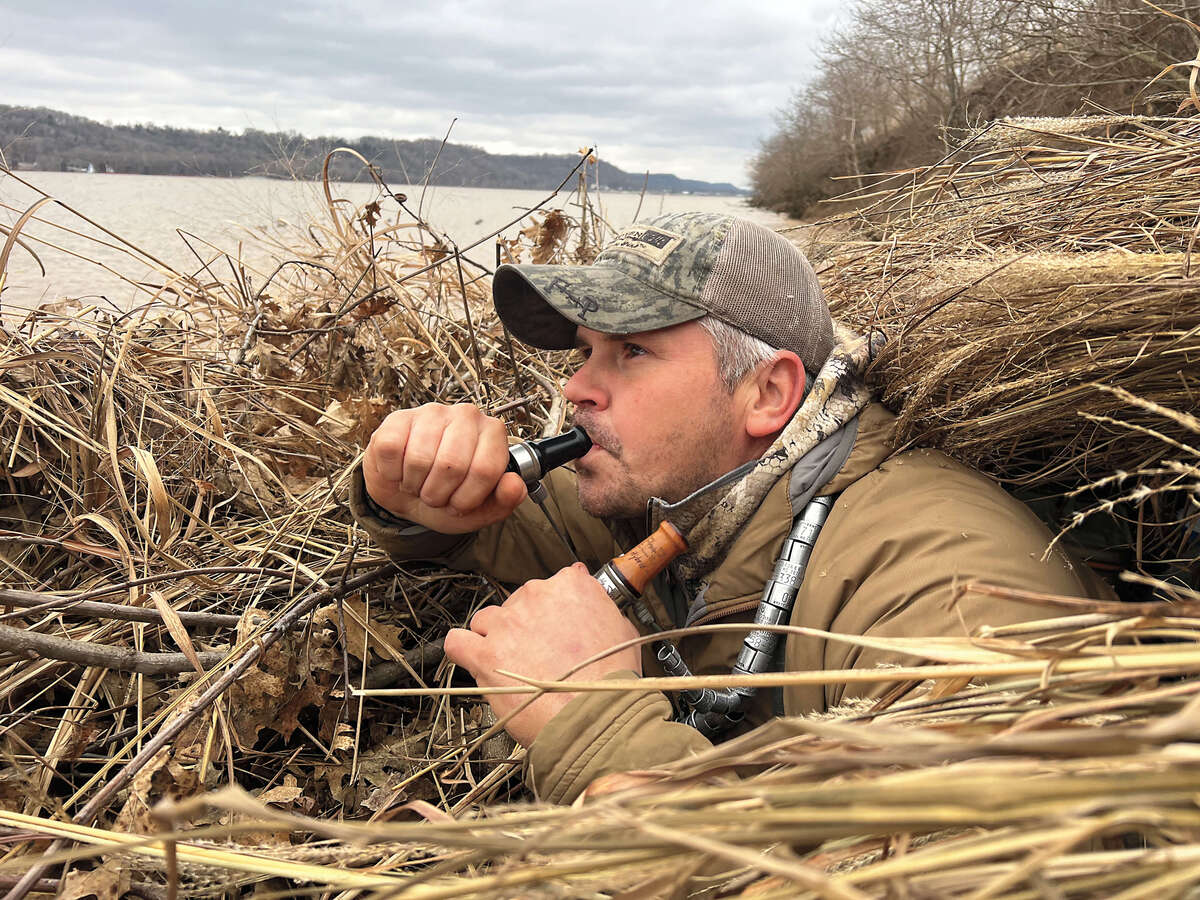Wood vs. Plastic Calls
While both materials have advantages, this perennial debate is a matter of preference
While both materials have advantages, this perennial debate is a matter of preference

By Bill Buckley

Many hunters carry both wood and acrylic calls on their lanyards.
If you’re new to the waterfowling game, choosing a duck call can be a bewildering experience. The Mack’s Prairie Wings website, for instance, offers over 150 different models. Experienced callers usually know what sounds they prefer and which calls typically reproduce them. Beginners should keep an open mind and consider a variety of factors.
The first thing most hunters look for in a call is the material from which it is constructed: wood or plastic (either acrylic or polycarbonate). Each material has a unique sound and tonal range. In general, wood calls are raspier and more nasal sounding than acrylics—what many hunters describe as “ducky”—although their tone will vary with the type of wood. Field Hudnall, World Live Duck Calling Champion and co-owner of Field Proven Calls, says, “Wood density dramatically changes tone and loudness. Soft woods like cedar produce softer, mellower, and flatter tones. Denser woods like Osage orange and hedge will be louder and sharper sounding. Acrylic calls tend to be much louder and sharper with a wider tonal range.
“Wood and acrylic calls differ in another important way,” Hudnall continues. “While every duck call collects condensation when you blow it, wood absorbs moisture and swells, continuing to do so as it’s blown. That leads to more variation in sound. Accomplished callers can change air pressure, add or take away rasp, and adapt to the call. Novice callers typically don’t have their mechanics down and need calls tuned in a very specific way to blow consistently, which makes acrylics or polycarbonates a better choice. Once fine-tuned, these calls are super stable.”
Polycarbonate calls are popular due to their low price relative to wood and acrylic, and they have sound qualities that many accomplished callers appreciate. “Like acrylic, polycarbonate is a stable material that is easy to fine-tune and produces loud, sharp notes,” Hudnall says. “While acrylics produce a wider range of sounds, particularly on the deeper end, you can tune a poly to get high, sharp, and what I call ‘pingy’ raspy notes due to the less-dense material vibrating when you put a lot of air through it. For many hunters, a well-tuned poly is the perfect call.”
Choosing a call is all about how it conforms to your needs, from how it feels in your hand to how hard you blow it to what sounds match your perception of what a hen mallard sounds like to where you hunt. A loud, sharp acrylic or poly call might work perfectly on windy days or when you need to grab a flock’s attention and hold it. Late-season ducks might react better to the softer, mellower sounds of a wood call, particularly when the ducks are in close. Every day is different, and what ducks want to hear depends on many factors, which is why most veteran hunters have more than one mallard call on their lanyard.
Hudnall says choosing the right duck call takes time and patience. Don’t blow a call for five seconds and move on. Regardless of material, you need to allow time for breath condensation to build up under the reed, as that will change how a call sounds and will be the normal operating state of that call. Also, try as many calls as possible; even calls made from the same material will sound dramatically different. And don’t assume a $150 acrylic is necessarily going to outperform a $30 poly call.
Finally, decide what you can blow better—a single- or double-reed call—then choose the material. If you like a traditional-looking call that’s soft and raspy, go with wood. Keep in mind that you’ll need to dry it out after each hunt and not subject it to wild temperature swings. If you like a loud and sharp call with a wide tonal range, you’ll probably want acrylic or poly.
Bottom line? Hudnall says, “Choose a call you can blow consistently that produces the sounds you like. There’s no right or wrong answer on how a call should sound. It all comes down to what suits your tastes.”
Ducks Unlimited uses cookies to enhance your browsing experience, optimize site functionality, analyze traffic, and deliver personalized advertising through third parties. By continuing to use this site, you agree to our use of cookies. View Privacy Policy